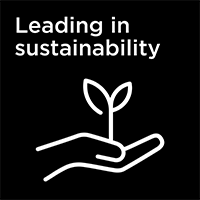CliMate tool turns data into decarbonization


Delivering on Clariant's purpose »Greater chemistry - between people and planet.«
This story is an example of how Clariant delivers on its purpose-led strategy.
Making carbon count: How our CliMate tool turns data into decarbonization
Carbon footprints aren’t something you can see on a label. But behind every shampoo, dishwasher tablet, or sunscreen, there’s an invisible story of how much CO₂ it took to make. Clariant’s CliMate tool is designed to uncover that story, giving customers and consumers the transparency they need to make better choices.
We sat down with Roman Prechtl, Product Carbon Footprint Manager at Clariant, to learn more about how our CliMate tool works and why it matters.

»Think of CliMate as an engine to calculate the “nutrition label” for carbon. It shows the carbon footprint of an ingredient — from raw materials to the moment it leaves our site.«
Roman Prechtl,
Product Carbon Footprint Manager at Clariant
Roman, before we dive in — when was the last time you personally thought about the carbon footprint of something you bought or did, and what did you discover?
In fact, I’ve often wondered how much my carbon footprint has changed since I stopped driving and started commuting by train and bicycle instead. My daily trip to Munich is about 70 kilometers, so the difference is quite significant: according to our Clariant AI, Clarita, commuting by car produces around 26 kilograms of CO₂ per day, while using the train and public transport generates only about 8 kilograms — a reduction of roughly 70%! And since Clariant subsidizes public transport tickets, this is surely the better and cheaper alternative!
What exactly is CliMate?
Think of CliMate as an engine to calculate the “nutrition label” for carbon. It shows the carbon footprint of an ingredient — from raw materials to the moment it leaves our site. Instead of vague claims, CliMate gives clear, verified numbers that brands can rely on when designing products. I like to say we’re translating chemistry into climate facts. You can’t see CO₂ molecules floating around your shampoo, but with CliMate, you can measure their story.
Why should anyone care about the carbon footprint of an ingredient?
Because it adds up quickly in the products we use every day. Take shampoo: the ingredient that makes the foam can be made in two ways — one with fossil-based materials, and one with renewables. To the shopper, the shampoo looks the same. But with CliMate, we can show that the renewable version has a significantly lower footprint.
For the brand, that means each bottle helps them cut emissions and reach their climate targets. For consumers, it means everyday choices like shampoo can quietly carry less carbon baggage. No consumer wakes up thinking about polymers or surfactants. But they do care about whether their choices are helping or harming the planet. Our job is to give brands the facts so they can make the right choices for consumers.
How is CliMate different from other tools out there?
It’s about transparency and reliability. CliMate is aligned with international standards and was recently certified by TÜV to comply with the latest version of the Together for Sustainability (TfS) Guideline. That means customers know the methodology and data behind the tool are reliable and consistent. What makes it stand out is transparency: If new scientific data shows that a product has a higher footprint than we thought, we update the results — even if it doesn’t look flattering. Real transparency builds trust. That’s what makes the tool valuable.
Can you give a concrete example of how this works in practice?
A great example is our EnviCat® emissions control catalysts, produced in Heufeld. These catalysts help remove harmful pollutants from industrial and engine exhaust, supporting cleaner air. With CliMate, we can now track and make visible how production improvements directly reduce their carbon footprint.
For instance, by switching to recycled metals in our production, the emission factor decreased by about 40%. That’s a major step forward — and with the automated PCF calculation of CliMate, this is simultaniously transparent for EnviCat. Any future change for a product, like switching to green electricity, would be immediately visible in the data. It’s a perfect example of how transparency drives continuous improvement and accountability in real time.
What’s the bigger picture here?
Transparency changes decisions. A dishwasher tablet manufacturer, for example, can compare two polymers, see the difference in carbon impact, and switch to the lower-footprint option. That choice, multiplied across millions of tablets, means thousands of tons of CO₂ avoided.
When people think about climate change, they think about airplanes or cars. But the ingredients in everyday products matter too — and that’s where we can make an enormous difference, quietly but at scale.
So what does this mean for consumers like me?
It means that the products you use every day — from shampoo to sunscreen to dishwasher tablets — are increasingly shaped by verified carbon data. When brands choose ingredients with lower footprints, the benefit flows into the final product you buy.
CliMate turns invisible footprints into visible facts. It is about giving customers and partners the transparency they need, we’re helping everyday products tell their carbon story honestly — and making it possible for small choices to add up to a big impact.

